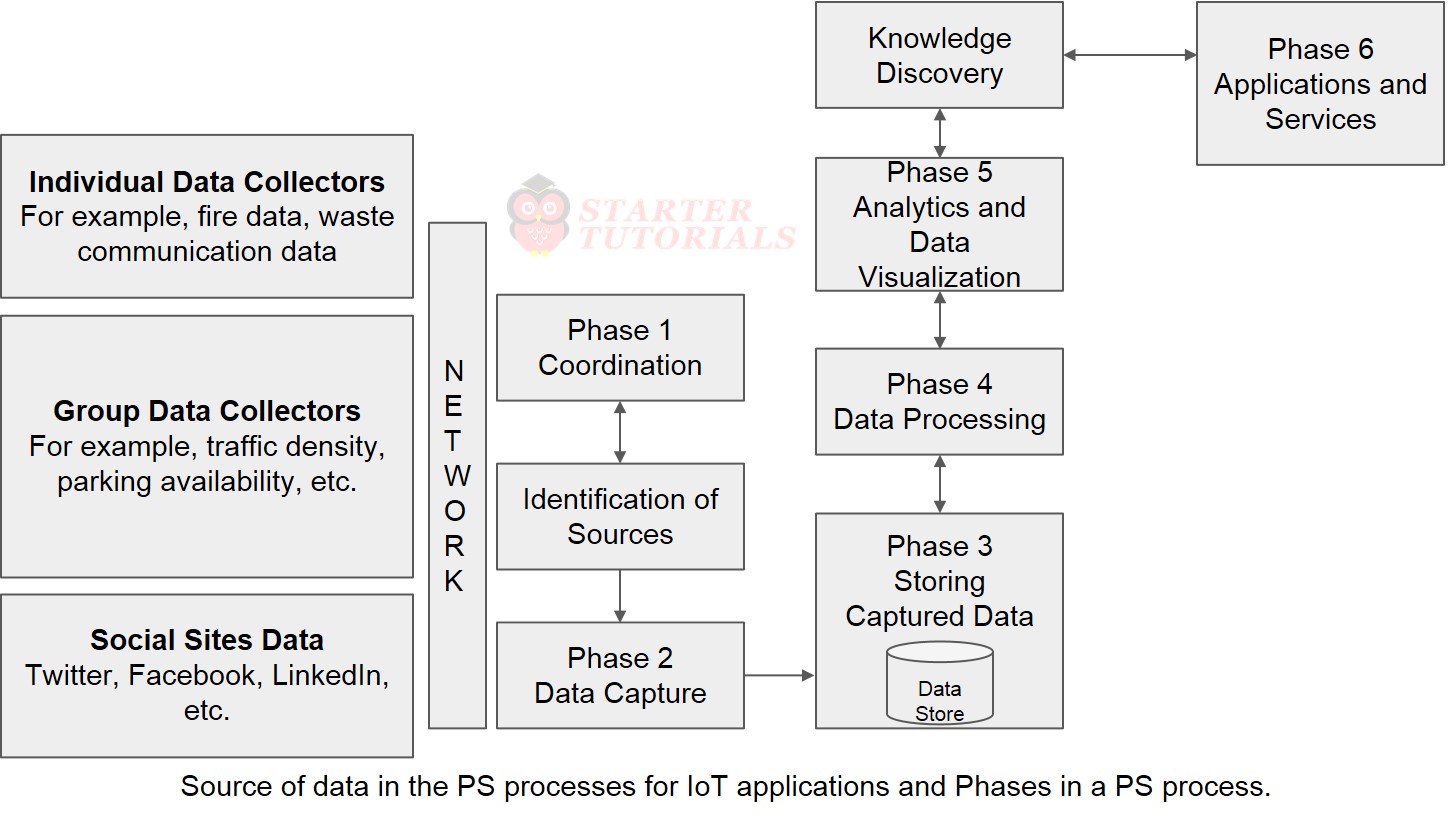Information collected from sensors at multiple heterogeneous sources can lead to knowledge discovery after analysis and data visualisation.
Participatory Sensing (PS) is defined as the process whereby individuals and communities use mobile phones and cloud services to collect and analyse systematic data for use in the discovery.
Participants in the PS can be sensors. Mobile phones have various sensors like camera, temperature and humidity sensor, accelerator, gyroscope, compass, infrared sensors, NFC sensor, code reader, microphone and GPS.
Applications of PS include retrieving information about:
- Weather
- Environment
- Pollution
- Waste management
- Road faults
- Health
- Traffic congestion
- Disaster management
PS has many issues like security, privacy, reputation, effective incentives for the participants, etc. Following diagram illustrates different phases in participatory sensing process:

Suryateja Pericherla, at present is a Research Scholar (full-time Ph.D.) in the Dept. of Computer Science & Systems Engineering at Andhra University, Visakhapatnam. Previously worked as an Associate Professor in the Dept. of CSE at Vishnu Institute of Technology, India.
He has 11+ years of teaching experience and is an individual researcher whose research interests are Cloud Computing, Internet of Things, Computer Security, Network Security and Blockchain.
He is a member of professional societies like IEEE, ACM, CSI and ISCA. He published several research papers which are indexed by SCIE, WoS, Scopus, Springer and others.


Leave a Reply